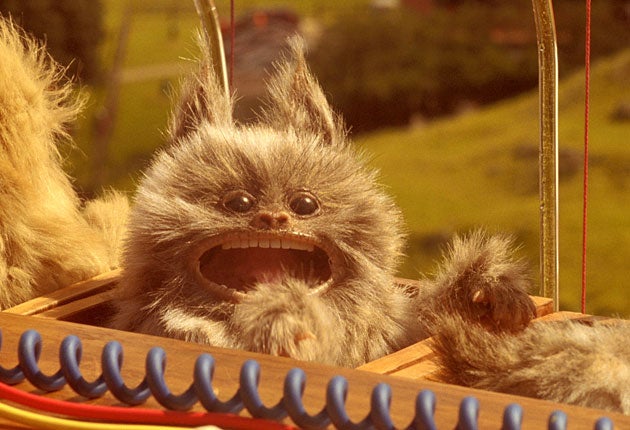Claire Beale on Advertising: Boyle's burr beats the tedious Fry

When Susan Boyle appeared on The Oprah Winfrey Show in the US last week, she was accompanied by subtitles to decode her Scottish brogue for the American ear.
But when adland gets its hands on Ms Boyle, her burr could prove as attractive as her singing voice. Boyle is not commercial property yet – she can't get her nose into the ad trough until Britain's Got Talent ends its current run. But brands are already lining up to capitalise on her fame and her thick Scottish vowels could prove almost as lucrative as her clear singing voice if a new study into accents in advertising is anything to go by.
It seems strong regional accents used in commercials can have a profound effect on our attitude to brands. Gone are the days when a nice, cut-glass voiceover was all that was required to suggest a brand was prestigious, desirable, reliable. Blame the rise in celebrity culture and the blurring of class structures, blame Cheryl Cole or Ant and Dec, but received pronunciation (RP) – a backbone for authority from the dawn of British broadcasting – is no longer the accent of choice for commercials.
It turns out that a chatty local lilt can draw us in and win us over. Just to make sure, the Central Office of Information – the body that handles all government advertising and consequently one of Britain's most prolific advertisers – has commissioned a study to see how advertising effectiveness can be improved by using different regional twangs. Do Scottish accents such as Boyle's infer prudence? Can they make us more likely to trust financial institutions? Does a Somerset cadence make a brand seem more earthy and natural? Does a Mancunian twang confer street cred? In ad voiceovers, it really is as crude as that.
Like it or not, regional accents conjure common stereotypes, and when you have only 30 seconds of airtime to sell a story, stereotypes are rather useful. So standard southern pronunciation can lend a brand message a cerebral, authoritative tone. But if you want to add humour or friendliness to your script, look north, because people up there are nicer and much more fun.
Local timbres are particularly powerful tools when advertisers want to convey credible, real-life experiences. Cue those fake-real people with comfy, ordinary voices seeking the cheapest car insurance. People like us. On the other hand, ads telling us to fill in our tax return or stay within the speed limits are better off invoking accents of authority, using a modern version of RP that's free of regional stereotyping.
All this is delicate territory for a government-funded organisation such as the COI. God forbid if the study should find Brummie accents are considered ugly and their owners stupid, or that Liverpudlians conjure images of tracksuited scallies; the COI could end up offending half the country. But it did find that how we respond to different accents depends very much upon our own. So people in Manchester and Tyneside are more positive about hearing their own accents in ads than people in the West Midlands and Bristol, who are rather turned off by voices like their own. Apparently we are more likely to like our own accents if we believe the rest of the country thinks they are cool too.
None of this explains the tedious inevitability of Stephen Fry cropping up in every ad break. Regional accents may have real-people appeal but nothing beats a celeb to get us engaged. As the nation's favourite renaissance man, Fry is an obvious choice for advertisers hoping to win our affection: his instantly recognisable tones immediately suggest wit, intelligence, sensitivity, sense – qualities which (too many) brands are eager to piggyback.
Despite endorsing everything from tea to insurance, his promiscuity does not seem to have diminished his credibility. And the fact he speaks so nicely hasn't done his voiceover career any harm at all.
Best in show: Coca-Cola (Mother)
This week's Best in Show is called "Yeah Yeah Yeah, La La La". Possibly that's all I need to say to convey the wondrously weird commercial that Coca-Cola and its agency Mother are about to unleash, but I will try to elaborate. A strange man with long hair pushes a big box to the top of a big hill and begins to set up the musical instrument inside. It is a bit like a piano, except that the music is made by squirting Coke into the mouths of funny, furry, Gremlin-like creatures that live in the instrument.
Beautiful young people hear the music and they run up the hillside dancing and drinking Coke. It is gloriously silly and it is all about Coke making people happy. Watch the ad and smile.
Join our commenting forum
Join thought-provoking conversations, follow other Independent readers and see their replies
Comments